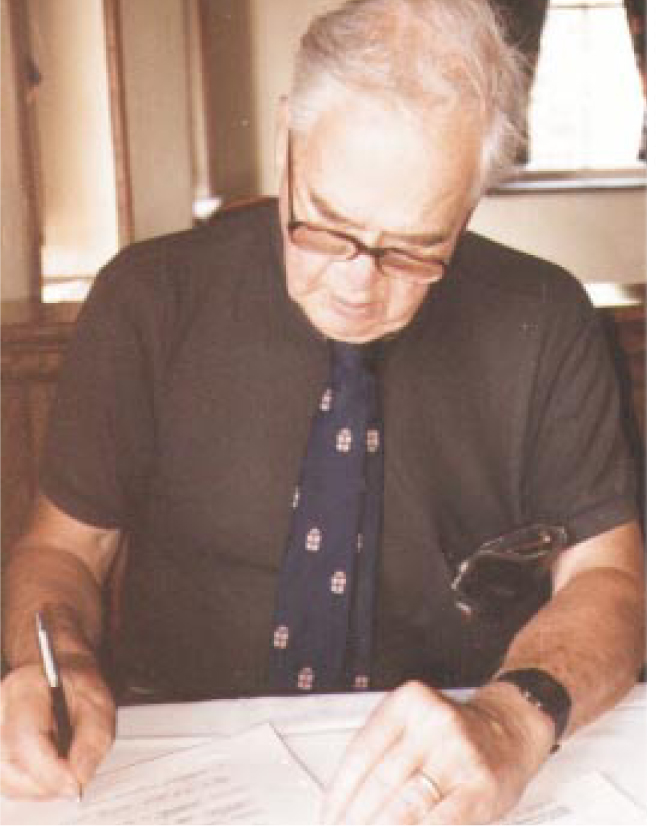John Wilder Tukey
DOI: 10.1063/1.1397408
John Wilder Tukey, Donner Professor Emeritus of Science at Princeton University and one of the most important contributors to the field of statistics, died 26 July 2000 in New Brunswick, New Jersey, following a heart attack.
Born on 16 June 1915 in New Bedford, Massachusetts, Tukey received an ScB in chemistry (1936) and an ScM in chemistry (1937) from Brown University and an MA in mathematics (1938) and a PhD in mathematics (1939) from Princeton University. He joined the faculty of Princeton in 1939 and remained there until his retirement in 1985. In his thesis on abstract topology, Tukey introduced terminology to describe some properties of sets. In mathematical foundations, the Axiom of Choice has two standard alternate forms: Zermelo’s Theorem and Tukey’s Lemma. The latter is often said to be the useful version of the Axiom of Choice.
The introduction of new terminology to capture distinctive concepts would become a Tukey trademark. For example, he coined the contraction “bit” for binary digit. Tukey is credited with the first printed use of the word “software” to refer to computer programs; he observed that the software might well prove to become more valuable than the hardware. The saying that “an approximate solution of the exact problem is often more useful than the exact solution of an approximate problem” has often been attributed to Tukey.
Tukey did not follow up on his thesis on topology. With the advent of World War II, he worked at the Princeton Fire Control Research Office. One of the problems Tukey tackled was to describe the buffeting of airplanes. In 1950, Tukey and Maurice Bartlett independently reduced stochastic process theory and Weiner’s abstract harmonic analysis to a form that could be applied to practical problems. Tukey achieved statistical stability by averaging kernels, but used the descriptive terminology of windows and their associated leakage. The similarity of this averaging to the apodization techniques of optical astronomy was noted and used by Tukey. Much of his practical work resulted from his association with Bell Laboratories, where he had a joint appointment with Princeton from 1945 to 1985.
Tukey’s further work on time series analysis involved the detection of underground nuclear tests. In 1959, he developed what are now called deconvolution techniques to assess the form of the initial seismic disturbance from a nuclear detonation. For this and his work on many public service committees, Tukey was awarded the National Medal of Science in 1973.
Becoming progressively more aware of the redundancy in the arithmetic of Fourier series, Tukey communicated his musings to various colleagues. Eventually, a set of notes documenting his notions reached James Cooley by way of Richard Garwin, both of the IBM Thomas J. Watson Research Center. The same content as those notes was also part of Tukey’s Mathematics 596 seminar lecture notes in 1963, which were augmented by graduate students. Tukey tried to interest several of his colleagues in pursuing his notions on the redundancy in the arithmetic of the Fourier series. He succeeded twice: One result was the Cooley–Tukey development of the notes communicated through Garwin; the other, the Sande–Tukey development of that part of the Mathematics 596 lecture notes. The two variants are mathematical transposes.
The fast Fourier transform was an interesting and useful exercise in clever programming made possible by the unique properties of the complex exponential, but similar developments were viewed as unlikely to be repeated. In 1969, however, Volker Strassen announced an improved matrix multiply algorithm. Together these two developments catalyzed the field now called computational complexity.
In 1970, Tukey introduced the box plot, which illustrates his style of using descriptive terminology and the barest of assumptions to achieve his desired result. Tukey was also involved early in motion graphics. In 1973, he helped define the pioneering PRIM9 system for multivariate statistical analysis at SLAC. The early MacSpin (1986) and the current DataDesk (1985)—microcomputer statistical systems providing motion graphics—have strong Tukey connections.
Many of the Princeton graduate students Tukey supervised nurtured various legends about the brashness of Tukey when he was younger. In his later years, this “brashness” seemed to be just mild eccentricities. For example, Tukey possessed a large collection of identical black T-shirts, which were his uniform except when a business suit was required. However, the pockets were woefully inadequate for holding his numerous multicolored pens and pencils. Tukey was generous with his advice. People presenting him with a problem would receive a battery of answers, most of which would be as good as the current best practice, and a few could prove to be useful advances. Tukey enjoyed such problem solving, which he called “playing in other people’s backyards.”
The definitive survey of Tukey’s professional output is being amassed in the Collected Works of John W. Tukey (nine volumes thus far), which has 10 subject matter editors, who, with Tukey, provided overview commentary. Only Tukey would have had the energy, the vision, and the breadth of knowledge to pursue all 10 areas.

THU HOANG

More about the Authors
Gordon Sande. Sande & Associates Inc, Secaucus, New Jersey, US .
